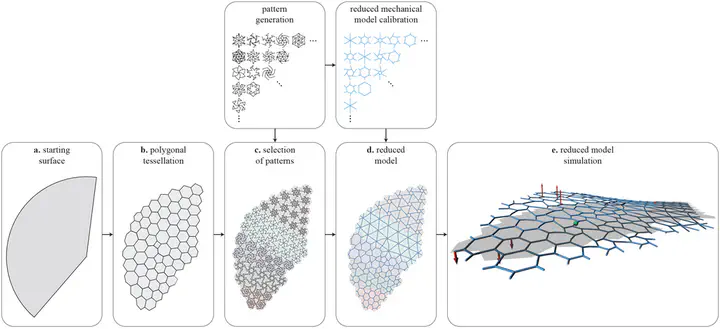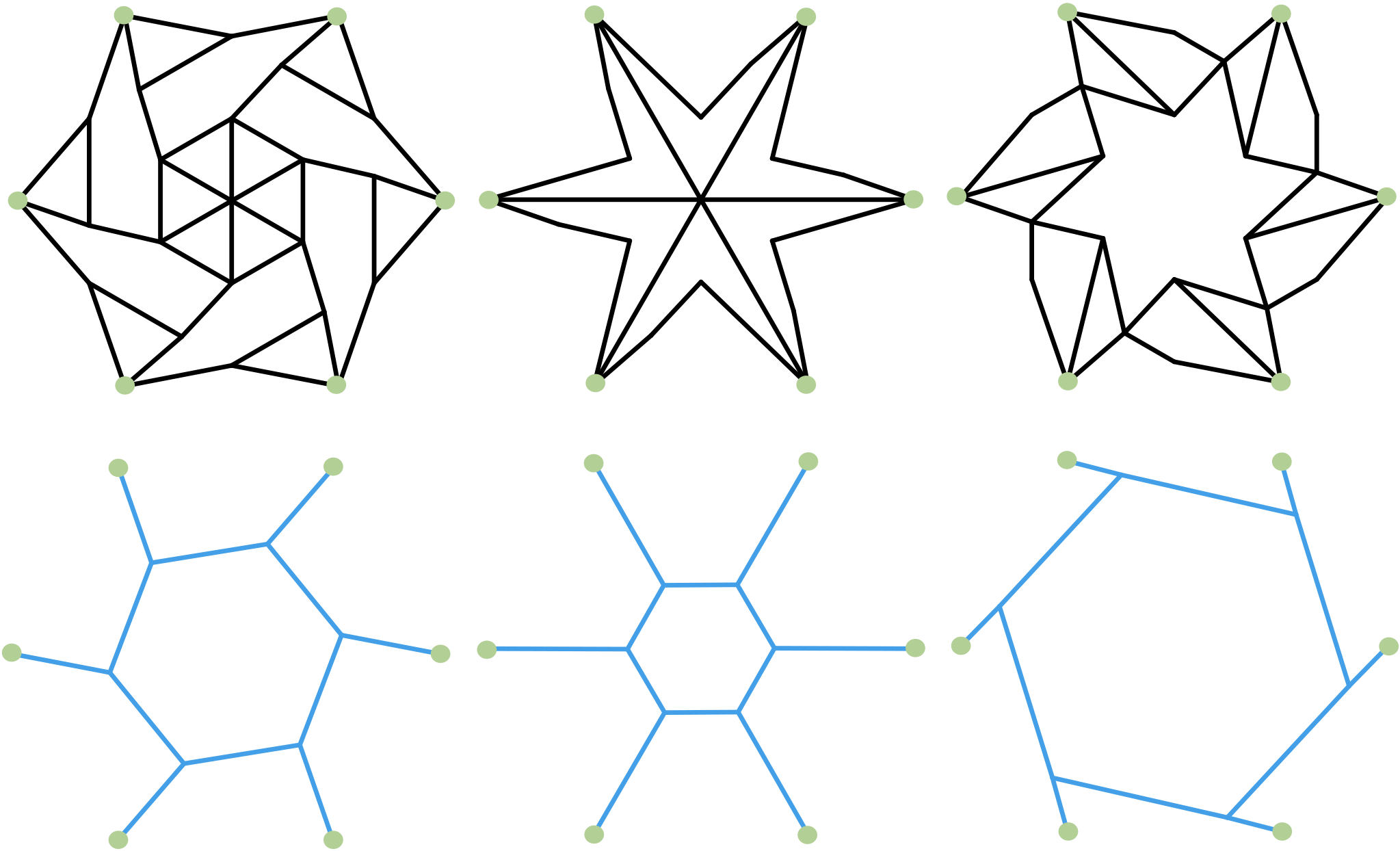
Abstract
The computational fabrication community is developing an increasing interest in the use of patterned surfaces, which can be designed to show ornamental and unconventional aesthetics or to perform as a proper structural material with a wide range of features. Geometrically designing and controlling the deformation capabilities of these patterns in response to external stimuli is a complex task due to the large number of variables involved. This paper introduces a method for generating sets of tileable and exchangeable flat patterns as well as a model-reduction strategy that enables their mechanical simulation at interactive rates. This method is included in a design pipeline that aims to turn any general flat surface into a pattern tessellation, which is able to deform under a given loading scenario. To validate our approach, we apply it to different contexts, including real-scale 3D printed specimens, for which we compare our results with the ones provided by a ground-truth solver.
